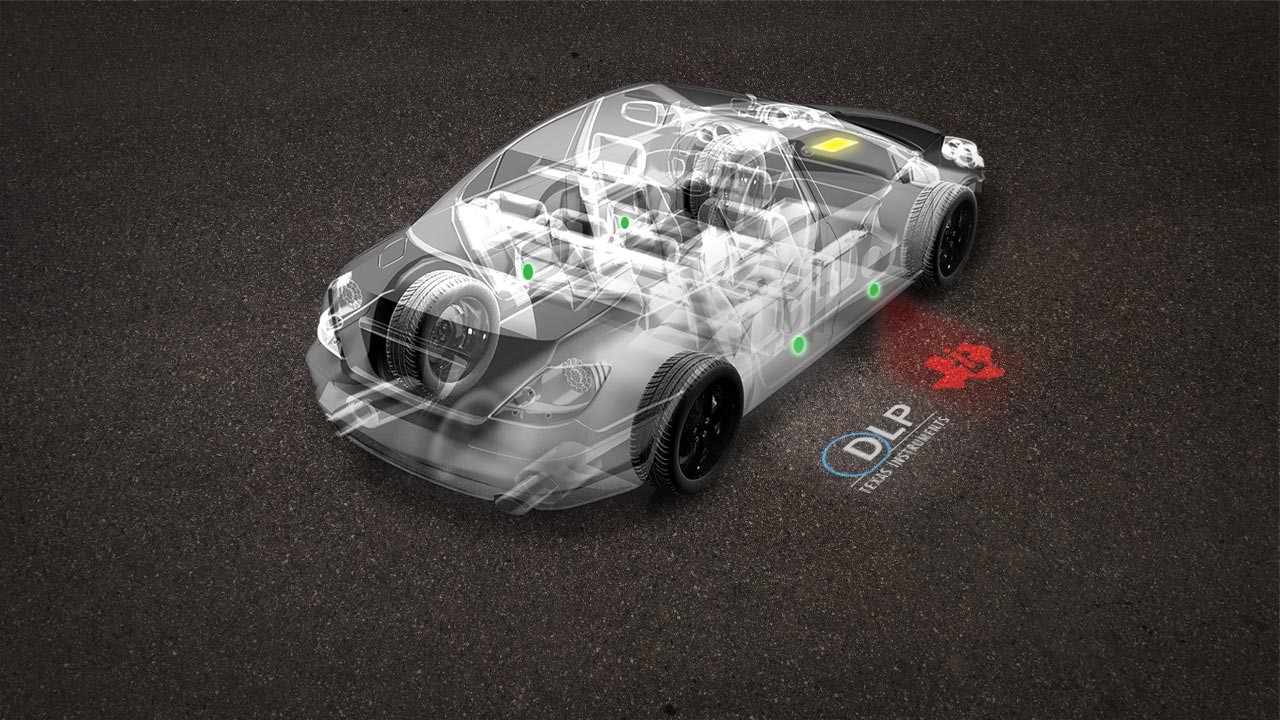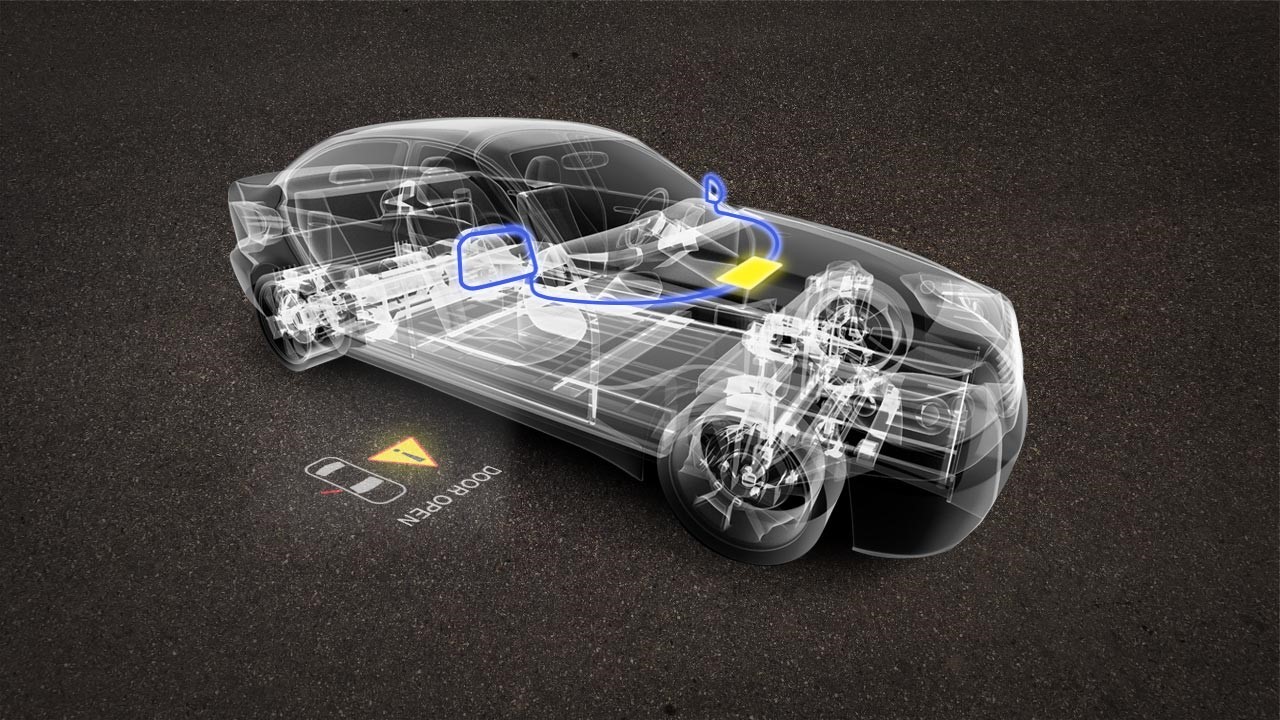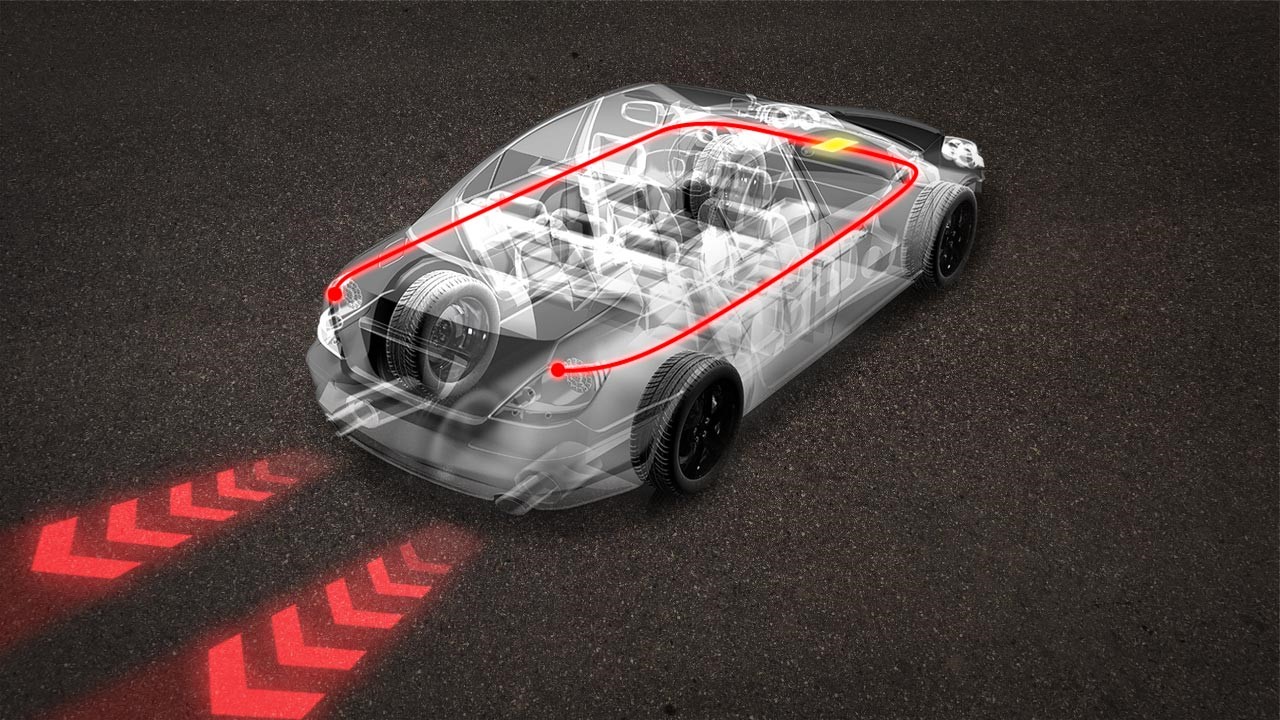DLPY012 June 2022 DLP2021-Q1 , DLP3021-Q1
What are the different electronics architecture options for DGP? What are the tradeoffs of each architecture?
What makes the DLP3021-Q1 and DLP2021-Q1 products different from the rest of Texas Instruments’ DMDs, is their ability to display content without a graphics processing unit (GPU). These DMDs can be display content that has been pre-processed and stored in flash memory. An FPGA in the system retrieves the content from memory and loads the bit planes to the DMD. By removing the need for a video bus and GPU, dynamic ground projection systems can be easily integrated anywhere in the vehicle. The DGP system can be connect to the vehicle’s CAN-FD or Ethernet network to enable updates to the flash memory or reloading new content and images to the projection module.
Our dynamic ground projection architectures support three distinct user experience options following a good, better, best offering model. First, there is a solution that enables an exterior small light replacement. The exterior small light replacement is the entry solution for dynamic ground projection as this is the easiest option to integrate, but comes with the lowest content flexibility. Second, there is a solution to enable user content selection and delayed content updates. This option enables the vehicle to update the flash memory, but does not enable the streaming of live video data. Finally, there is a solution to enable live video streaming from a GPU for the highest system performance and flexibility. Each of these architectures services a unique purpose which allows OEMs and Tier 1s to create a portfolio of dynamic ground projection offerings for different vehicle trim levels.
Our exterior small light replacement architecture is the simplest and most cost-effective solution. This solution inspired the DLP3021LEQ1EVM and DLP2021LEQ1EVM electronics designs and is meant to serve as a replacement to existing small lights. The only input signals required for modules with this architecture are power rails and this solution displays content almost instantaneously after power is supplied. While this solution is ideal for someone looking to replace a puddle light, the flash memory in the system cannot be updated without the module being removed from the car. If dynamic ground projection is only desired for vehicle styling, this architecture is the most cost-effective way to enable dynamic projections. Figure 1 highlights how DLP technology can generate images, without being connected to the vehicle’s ECU. The module position is shown by the green dots, and the ECU is highlight in yellow at the front of the car. While this image shows the DGP modules mounted in the doors, these modules can be mounted anywhere in the car as long as power rails are accessible. Both the DLP3021-Q1 and DLP2021-Q1 DMDs can support this architecture.
 Figure 1 Exterior small light
replacement architecture requirements.
Figure 1 Exterior small light
replacement architecture requirements.The architecture required to enable user selected content is a bit more complicated than our exterior small light replacement, as the modules need to be connected to the vehicle’s central ECU. The easiest way to enable this experience, is to connect the ECU to the modules with CAN-FD or Ethernet. These connections enable new data to be sent to the module and store in flash memory. A SPI command can be sent to the module to enable different images or videos to be played on demand from the user or vehicle’s automated driver assistance system (ADAS). The user may be able to select various welcome or leaving scenarios, and receive updates for specific holidays based on the vehicle’s location. Additionally, if the DGP module is used during operation of the vehicle, the DGP modules can communicate with surrounding pedestrians to project the intent of the vehicle and extend turn signals. With a more complex system, vehicle manufacturers can enable a brand-new experience each time a user approaches the vehicle. Figure 2 shows the DGP modules’ connection to the central ECU. This system design restricts mounting locations to areas that can connect back to the ECU. The blue highlighted paths depict and example routing of the CAN-FD or Ethernet connections for the DGP modules. Both the DLP3021-Q1 and DLP2021-Q1 DMDs can support this architecture.
 Figure 2 Vehicle infrastructure routing
to connect the DGP module to the central ECU.
Figure 2 Vehicle infrastructure routing
to connect the DGP module to the central ECU.While the previously discussed architectures focused on cost-conscious implementation of DGP and integration into existing vehicle networks, the highest performance architecture uses live video streaming to display content. Live video streaming can be accomplished by routing a video bus from the central ECU to the DGP module in a similar fashion to the aforementioned architecture. An example of how a video bus could be routed is shown below in Figure 3. Routing a video bus comes with its own challenges, but results in the most dynamic system, as the desired content can be generated on the fly and immediately displayed by the DGP module. Content for customization, styling, branding in addition to ADAS information can be displayed, turning the area around the vehicle into a display. This architecture is only supported by the DLP3021-Q1 DMD with the DLPC120-Q1 DMD controller, which replaces the FPGA used in the exterior small light and user content selection architectures.
 Figure 3 Live video streaming routed to
DGP modules in the vehicle's taillights.
Figure 3 Live video streaming routed to
DGP modules in the vehicle's taillights.